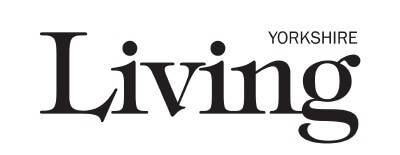Introduction to facial fillers
Facial fillers have become increasingly popular in recent years as a non-surgical option for enhancing and rejuvenating the face. These injectable treatments add volume, smooth out wrinkles, and restore a youthful appearance. If you’re considering facial filler, it’s important to understand which areas of your face are best suited for these treatments.
Different types of facial fillers
There are various types of facial fillers available, each with its unique properties and benefits. Some of the most commonly used fillers include hyaluronic acid (HA) fillers, calcium hydroxylapatite (CaHA) fillers, and poly-L-lactic acid (PLLA) fillers.
Hyaluronic acid fillers are the most popular choice due to their versatility and natural-looking results. They can be used to add volume to the lips, cheeks, and nasolabial folds, as well as to fill in fine lines and wrinkles.
Calcium hydroxylapatite fillers are another option, often used to treat deeper wrinkles and folds. They stimulate collagen production, providing long-lasting results.
Polylactic acid fillers work by stimulating collagen production over time, resulting in gradual and natural-looking improvements. These fillers are typically used to treat larger areas, such as the temples, cheeks, and jawline.
Benefits of using facial fillers
Facial fillers offer numerous benefits for those looking to enhance their appearance without undergoing surgery. Firstly, fillers are a non-invasive option, meaning there is no need for incisions or downtime. The treatments are quick, usually taking less than an hour, and the results are immediate.
Fillers can effectively address a range of concerns, including volume loss, wrinkles, and sagging skin. By adding volume and smoothing out wrinkles, fillers can help restore a youthful and refreshed appearance. They can also improve facial symmetry and enhance facial contours, giving you a more balanced and harmonious look.
Another advantage of facial fillers is their temporary nature. Unlike surgical procedures, the effects of fillers gradually wear off over time, allowing you to make adjustments or explore different options in the future.
Common areas for filler
When it comes to facial fillers, several common areas are frequently treated. These include the lips, cheeks, nasolabial folds, marionette lines, and under-eye hollows.
The lips are a popular filler area, as they can add volume and enhance the shape and definition. Fillers can also smooth out vertical lip lines and correct asymmetry.
Cheek fillers are used to restore volume to the cheeks, which can flatten and sag with age. By adding volume to the cheeks, fillers can create a lifted and more youthful appearance.
Nasolabial folds, also known as smile lines, are the creases that run from the sides of the nose to the corners of the mouth. Fillers can help soften these lines, making them less prominent and creating a more youthful look.
Marionette lines are the lines that extend from the corners of the mouth down to the chin. Fillers can be used to fill in these lines, reducing the appearance of sagging and creating a more defined jawline.
Under-eye hollows, or tear troughs, can make you look tired or older than you are. Fillers can be used to add volume to this area, reducing the appearance of dark circles and hollows.
Best areas of the face for fillers
While fillers can be used in various areas of the face, some areas are particularly well-suited for these treatments. The mid-face, which includes the cheeks, temples, and under-eye area, is often considered the best area for fillers. By adding volume to the mid-face, fillers can provide a subtle lift and rejuvenation to the entire face.
The temples are another area where fillers can make a significant difference. As we age, the temples can lose volume, resulting in a hollow appearance.
The jawline is another area that can benefit from fillers. Fillers can create a more defined and sculpted appearance by adding volume along the jawline. This can help improve facial symmetry and create a more balanced profile.
The lips are also a popular filler area, as they can enhance the shape and volume. Fillers can create fuller, more defined lips, helping to achieve a more youthful and attractive smile.
Different facial zones for filler
To determine the best areas of your face for fillers, it’s important to understand the different facial zones. The face can be divided into three zones: the upper face, mid-face, and lower face.
The upper face includes the forehead, temples, and brow area. Fillers are typically not used in this area, as it can be challenging to achieve natural-looking results. Botulinum toxin (Botox) injections are often preferred for addressing wrinkles and lines in the upper face.
The mid-face includes the cheeks, under-eye area, and nasolabial folds. This zone is often the focus of filler treatments, as adding volume to the mid-face can provide a subtle lift and rejuvenation to the entire face.
The lower face includes the lips, chin, and jawline. Fillers can be used in this area to enhance lip volume, define the jawline, and correct marionette lines.
The consultation process for facial fillers
Before undergoing facial filler treatments, it’s essential to schedule a consultation with a qualified and experienced practitioner, like our team at Blossom Cosmetics in York. During the consultation, your practitioner will evaluate your facial anatomy, discuss your concerns and goals, and develop a personalised treatment plan.
It’s important to be open and honest during the consultation, as this will help your practitioner understand your expectations and tailor the treatment accordingly. You should also inform your practitioner of any medical conditions, allergies, or medications you are currently taking.
Your practitioner will explain the different filler options available and recommend the most suitable filler for each area. They will also discuss the expected results, potential risks and complications, and the cost of the treatment.
Aftercare and maintenance for fillers
After your facial filler treatment, it’s crucial to follow the recommended aftercare instructions to ensure optimal results and minimise the risk of complications. These instructions may include avoiding excessive sun exposure, refraining from strenuous exercise for a few days, and avoiding certain medications or supplements that can increase the risk of bruising.
It’s also important to attend any recommended follow-up appointments to assess the results and address any concerns or touch-ups that may be needed.
Facial fillers are not permanent, and the effects will gradually fade over time. To maintain the results, you may need periodic touch-up treatments. The frequency of these treatments will vary depending on the type of filler used, your response to treatment, and your desired outcome.
In conclusion, facial fillers can provide a non-surgical solution for enhancing and rejuvenating the face. By understanding the different types of fillers, the best areas for treatment, and the consultation process, you can make an informed decision about whether fillers are right for you.
Book your consultation now at Blossom Cosmetic Clinic in York!






